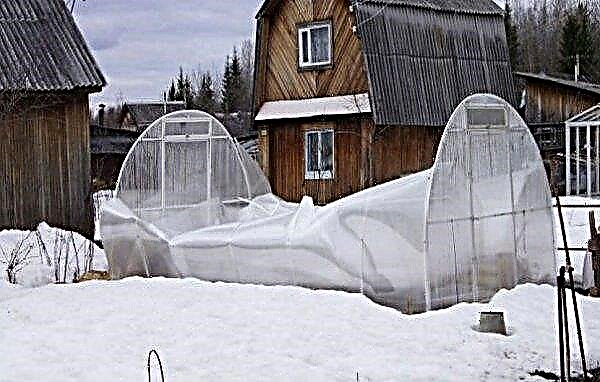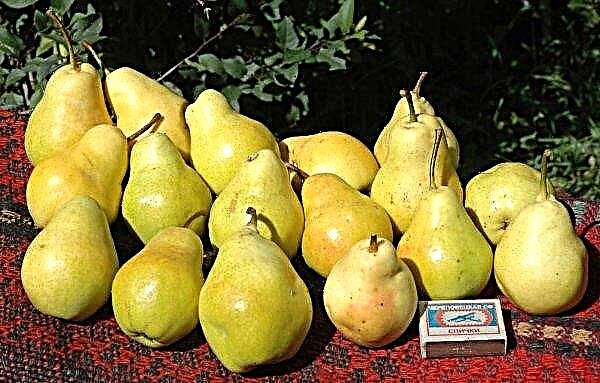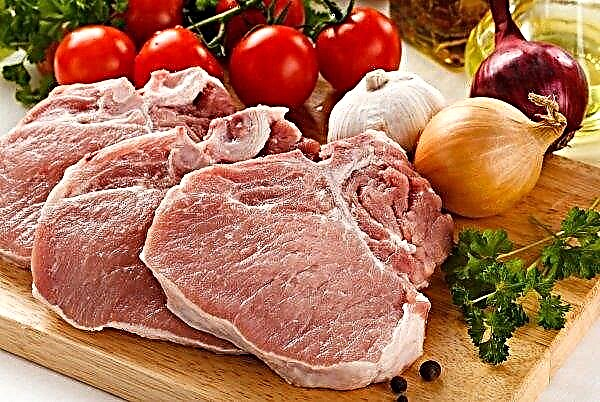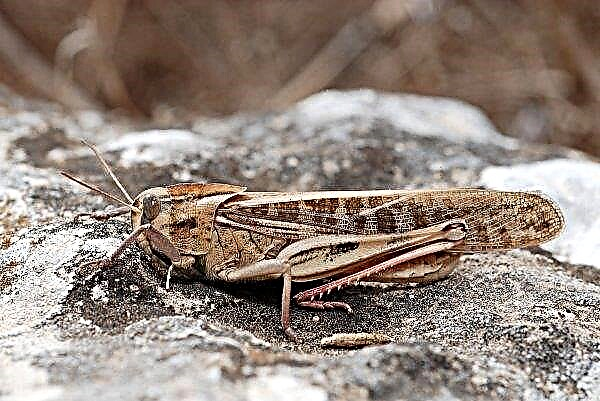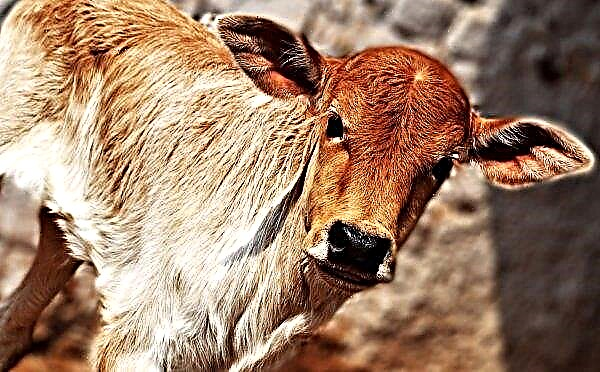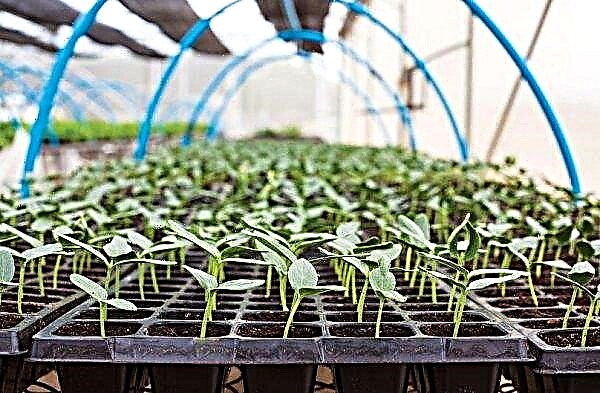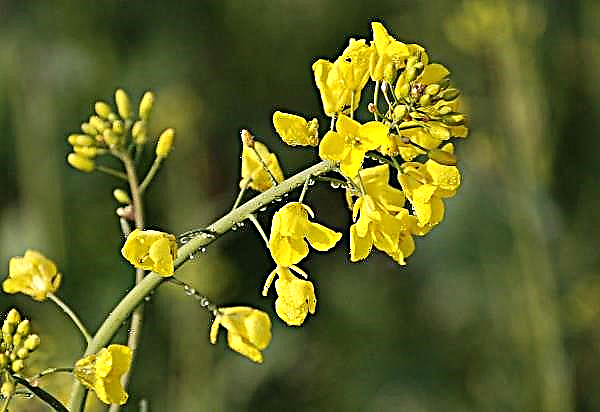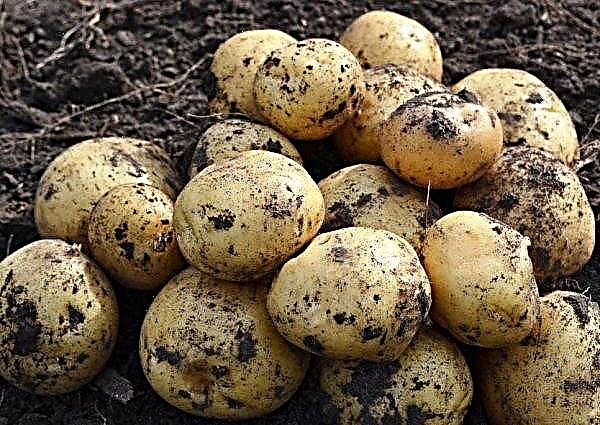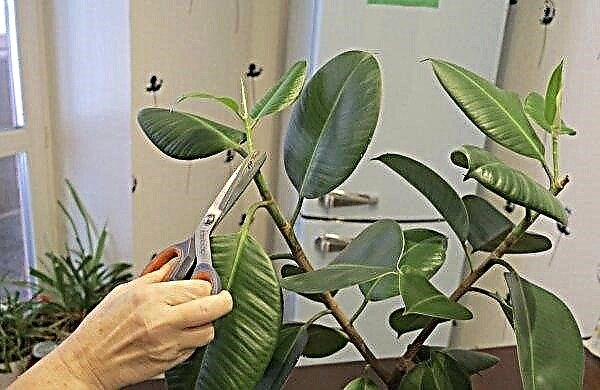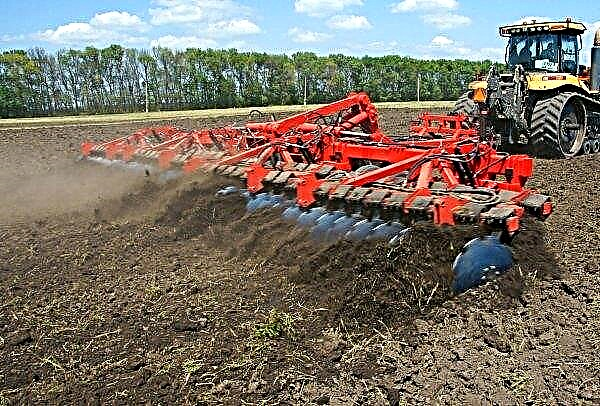Apples are the most common fruits that can be found in all kinds of personal plots and this is understandable - the fruits are a whole storehouse of various vitamins and useful substances, so necessary for the health of any person. However, choosing an apple tree for your garden, it’s hard not to get confused in so many different varieties. Oryol striped belongs to the universal elite varieties, whose characteristics are highly appreciated by both professional gardeners and amateur summer residents.
Description of the variety and its characteristics
Orlovskoye striped apples were bred in the mid-50s of the last century by the All-Russian Research Institute of Selection, thanks to the active participation of breeders Sedovoy E.N. and Trofimova T.A. The variety is the result of crossing apples Mekintosh and Bessemyanka Michurinsky. In the next twenty years, this variety was classified as elite and was recommended for cultivation in intensive type gardens (orchards that practice the cultivation of quick-growing high-yielding plants) in the Central and Central Black Earth regions.
Did you know? According to statistics, every second fruit tree in the world is an apple tree.
At specialized exhibitions held in the GDR in the late 70s and mid 80s, this variety was twice awarded gold medals.
Description of apples and tree
Orlovskoe striped fruit tree belongs to medium-sized varieties. Crohn has a round shape. The location of the main branches, which depart from the stem almost at an angle of 90 °, ensures the strength and preservation of the tree even at high yields. The foliage is mainly large, with pronounced teeth along the edges, dark green in color. Leaf shape - broad ovoid. Inflorescences are saucer-shaped, white-pink.
Check out such autumn varieties of apple trees as:
The fruits have a round-conical shape, weighing up to 150–160 g. The skin is thin, the flesh is white or cream in color, juicy and fine-grained. The apples taste sweet and sour, with a predominant note of acid. The fruits of this variety are rated by experts at 4.6 points, which indicates high taste characteristics.
Pros and cons of the variety
- The apple of this variety is endowed with many advantages, the main of which are:
- high taste and external characteristics of the fetus;
- early maturity - the first harvest can be carried out already in the fourth year of the plant's life;
- high productivity;
- stable immunity to numerous diseases.
This variety has practically no negative characteristics and, perhaps, the thinness of the skin, which is easily injured and deteriorate, can be called the only minus, and therefore requires caution when harvesting and transporting it.
Variety Productivity
Apples Orlovsky striped belong to one of the most productive varieties of apples. An adult apple tree at the age of 8 can bring up to 50 kg of selected fruits, and by the age of 10 this figure rises to 80 kg. The total yield of a mature tree is 200 centners per 1 ha.
Main pollinators
According to the experiments that were conducted on test bases, the researchers concluded that the Oryol striped belongs to self-infertile varieties and, accordingly, the possibility of self-pollination is reduced to almost zero. Therefore, in order to achieve the highest possible yield indicators, it is recommended that the neighborhood of apples of the Antonovka variety be recommended.
Also, high cultivars were noted for cultivating varieties such as: Welsey, Orlik Yabloni and Remembrance of the Warrior. This neighborhood provides up to 85% of the ovaries. Not so good, but it is also permissible to plant nearby the North Sinap and Autumn striped varieties. 1 - grade Antonovka; 2 - grade Welsey; 3 - grade Memory of a warrior.
1 - grade Antonovka; 2 - grade Welsey; 3 - grade Memory of a warrior.
Grade stability
Apples of this variety are endowed with many useful characteristics, among which the most important, perhaps, is their resistance to low temperatures, as well as their immunity to diseases. Despite the fact that the early varieties, which include the Oryol striped, have average winter hardiness, these apples are quite capable of surviving harsh winters. However, in the conditions of the North, trees will require shaping, which will reliably protect them from freezing.
Did you know? An apple cannot drown in water, since about 25% of its mass is air.
The method of heating trees is called the stanchion form, by gradually tilting the seedling from the moment of planting to the north side. This makes it possible to be the main branches near the soil and in winter completely hide behind the snow. As for disease resistance, this variety is characterized by persistent scab immunity. - a very common disease that affects not only the foliage, but also the fruits of the tree. The causative agents of the scab of the pear and the apple tree are close relatives, but the mushroom from the pear will never go to the apple tree, and the scab of the apple tree will not go to the pear.
The causative agents of the scab of the pear and the apple tree are close relatives, but the mushroom from the pear will never go to the apple tree, and the scab of the apple tree will not go to the pear.
Features of tree planting
Adhering to the basic rules of the planting procedure is one of the main requirements in obtaining a healthy tree and, as a result, a rich harvest.
Optimal dates for planting
It is allowed to plant apple seedlings at any time of the year, but spring or autumn is still the preferred time, and each of them has its own advantages and disadvantages. Autumn planting is suitable for more southern regions with a mild climate and not cold winters, as well as areas rich in chernozem. Planted in the autumn period, the sapling during the winter manages to fully acclimatize, grow well in the soil and strengthen the root system and, with the onset of spring, begin to actively grow and develop.
As for the deadlines, the procedure itself is better to carry out in the early days of October. Planting in the spring gives the seedlings enough strength to survive the winter cold easily and calmly. The time of the procedure may vary somewhat depending on weather conditions - from the end of April to the beginning of May. It happens that you need to plant a tree in the summer. Most often, this is a necessary measure, which is resorted to in case of transplanting a seedling to another place. Planting time also depends on the age of the young tree - spring is more suitable for young seedlings, whose age does not exceed 2 years, but more mature trees can be planted in the fall. Mature trees should be replanted in the fall or even in the winter, because the plant, being at rest, more easily tolerates injuries of the root system and a change in position.
Planting time also depends on the age of the young tree - spring is more suitable for young seedlings, whose age does not exceed 2 years, but more mature trees can be planted in the fall. Mature trees should be replanted in the fall or even in the winter, because the plant, being at rest, more easily tolerates injuries of the root system and a change in position.
Site and soil selection
Starting to choose a place for planting an apple tree, you should take into account several points:
- the soil in which the tree will grow should be quite fertile - for example, loose and light chernozem;
- there will be enough sunlight in the area;
- the tree will be protected from the wind from the north side.
Important! It is undesirable to plant a new seedling in place of an old apple tree, since the earth requires rest.
How to plant a seedling?
To begin with, you should choose the seedling itself, guided by the following principles:
- The best seedlings will be one or two years. When determining age, it should be noted that a one-year-old seedling does not have developed branches, and two-year-old ones have no more than 2–4 additional branches.
- The root system of the seedling should be moist, but without signs of rot, elastic and not brittle. The same applies to the aboveground part - necessarily the absence of growths and damage.
- You must know that according to GOST, a seedling should not have foliage.

Planting a seedling consists of several basic steps:
- Preparation of the landing pit - carried out in advance, several months before the landing, which allows the soil to sag and evenly moisten. The hole size for medium-sized trees is 50 cm deep and 100 cm wide. When digging a hole, the soil layers are laid out separately, since the top layer will be more fertile than the bottom.
- A small stake, about 1.5 m high, is hammered into the prepared hole, and the pit itself is filled up with the top layer of soil, and then with fertilizer consisting of humus and compost, until a small mound is formed. The root system of the seedling is neatly straightened and covered with soil mixed with fertilizer. At the same time, the root neck should protrude 3-5 cm above the ground.
Important! In order to check the sapling for dryness, you can bend the root or shoot into a ringlet - they should easily bend, not crunch, and the bark in the bend area should be gathered accordion, but not exfoliate.
- The soil around is carefully tamped with a foot, and the seedling itself is tied to a peg.
- A hole is made around the seedling, the diameter of which is 1.2 m, where about 20 liters of water is poured.
- After complete absorption of moisture by the soil, the soil is mulched with the help of humus and foliage, which in the future will prevent drying of the earth.
 Apple tree planting scheme
Apple tree planting schemeCare Features
Gardeners who grow apple trees confirm that proper and careful care of these trees brings a rich harvest of high quality and improves the overall development of the entire planting.
Irrigation mode
There are 4 ways to water the apple trees:
- Surface irrigation - water is poured into small ditches, the depth of which is up to 15 cm, dug by the diameter of the crown. Water in them should be poured in small portions until the soil ceases to absorb moisture.
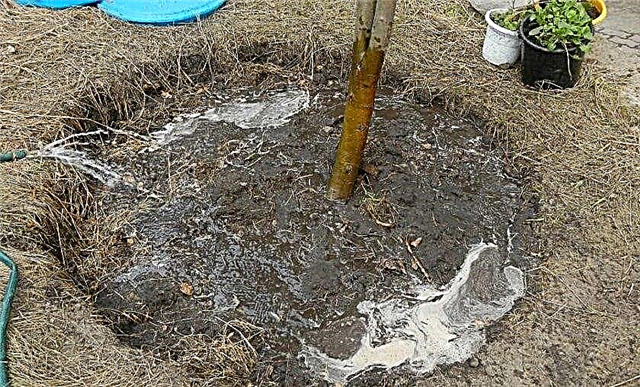
- Subsoil irrigation - drip irrigation tubes are located under the landscape, providing uniform saturation of the root system with moisture.
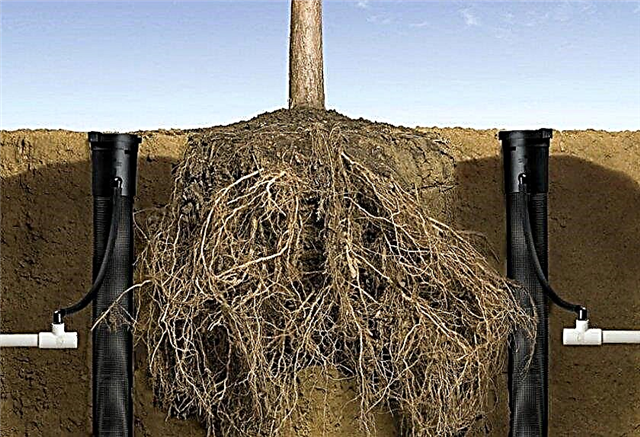
- Drip irrigation - the tree is watered exactly at the base and roots of the tree, which allows you to get the maximum result with minimal use of water. That is why, this method is considered the most acceptable watering of apple trees.

- Irrigation - water with this method is scattered into small drops, which helps to uniformly moisten the soil to a depth of 80 cm. However, such watering is contraindicated in a period of extreme heat.
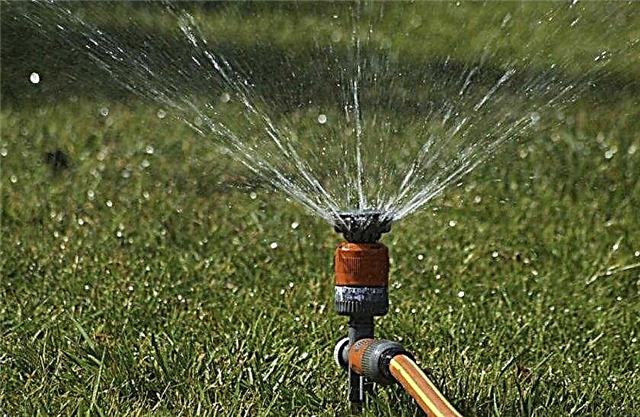
Fertilizer application
The feeding scheme of an adult apple tree is somewhat different from the time of year and includes the following steps:
- in April, the apple tree is treated from pests with various fungicides;
- in May, during the buds swelling, the tree is once again treated with pesticides that protect against pests, and during the blooming period, urea is fed (1/2 tbsp.spoon per 1 m² of the trunk circle);
- in June, the necessary trace elements are introduced - the tree is watered with a solution of 10 l of water, in which 0.5 g of boric acid and 2 g of copper sulfate are dissolved;
- in July, the soil of the near-trunk circle is dug up and the green manure is planted (this can be ornamental plants, garlic, peas, etc.), which are mowed after a month;
- in August superphosphates and calcium chloride (20–30 g per 1 m²) are applied to the soil;
- in September, the trunk circle is covered with manure or compost.
Important! Fertilizers of apple trees are best applied not in the trunk circle, but along the contour where the suction roots are located. Plastic bottles with dug necks and a cropped bottom will help with this. — bait can be poured into them.
Crown formation and trimming
Experienced gardeners know that proper pruning not only improves the appearance of the tree, but also has a great influence on its growth and development, as well as the quality of the future crop. Such a procedure is necessary for apple trees constantly, so it is so important to carry out pruning systematically. The scheme of pruning apple trees.Total pruning of the crown of apple trees has several ways of carrying out:
The scheme of pruning apple trees.Total pruning of the crown of apple trees has several ways of carrying out:
- tiered sparse formation is the most preferable method when tree branches are cut in tiers, which can significantly increase productivity and extend the period of fruiting;
- spindle-shaped formation is the easiest way, when a small volume of branches is processed and cut, the main processes are removed by secateurs;
- cup-shaped formation - this method is similar to a longline sparse pruning technique and is used for dwarf plants with a short life span;
- anti-aging formation - the method is used for long-lived trees, in which it is necessary to extend the fruiting period as much as possible;
- trimming of vertical palmettes - applied to apple trees that are located along the perimeter of the site or along the facade of buildings.
Preparing a tree for winter
Preparing the tree for the winter cold is an important part of the care procedures, on which the state of the apple tree in spring will depend.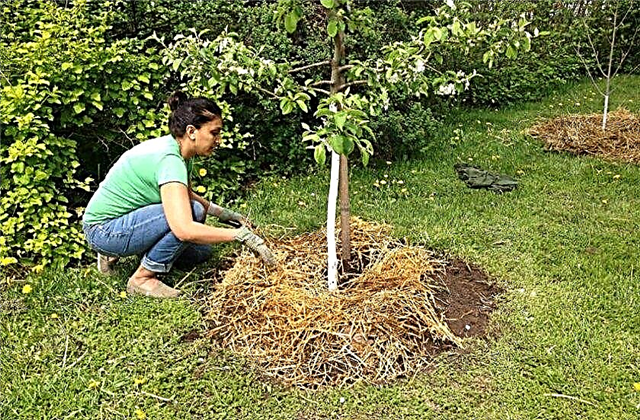
The main stage is the insulation of the aerial parts and the root system of the plant, which consists of the following steps:
- soil loosening;
- mulching the trunk circle using peat, manure or sawdust, which will save the root system from freezing;
- young trees require the construction of low mounds, up to 40 cm high;
- additional warming in the form of raking snow on the trunk circle.
One-year-old seedlings are most susceptible to frost, and therefore require additional warming of the trunk with handy materials (for example, paper, roofing felt, burlap), fixed with adhesive tape. Also for such purposes, you can use reeds or spruce.
In the process of preparing for the cold weather, preventive measures are also taken, which serve as protection against all kinds of pests, old, dry and non-fruiting branches are cut out, and autumn watering is also carried out.
Possible growing problems
Consider the main reasons that can lead to losses not only in the appearance of the tree, but also affect the quality and quantity of the crop:
- Aphid - parasitizes on the deciduous cover of the plant, sucking out the juice, which leads to curling of the leaves and their falling. As a fight and prevention, trees are treated every spring with a 3% solution of kalbofos (and when the buds have already blossomed - with a 2% solution).
- Black cancer disease - manifests itself in the form of dirty purple stains or squeezed spots on the surface of the bark and trunk of the tree, after which the affected areas crack and become covered with dark spores of the fungus. Most often, plants aged 20 or more are susceptible to this disease. As a treatment, diseased fragments of the tree are removed and necessarily burned. Places of cuts are treated with a solution of copper sulfate.
- Scab - It is considered the most common disease among apple trees, affecting not only foliage, but also inflorescences, fruits and shoots of plants. The cause of this fungus may be an excess of moisture due to heavy rainfall, fog or frequent watering. The disease appears as light green spots on the outside of the leaves and on the apples themselves. For treatment and prevention, fungicides are used, and fallen leaves are removed and the soil around is dug.
- Rust - manifests itself in the form of star-shaped growths, which lead to falling leaves and loss of winter hardiness of the tree. As a treatment, fungicidal preparations are used.
- Powdery mildew - the defeat of the disease occurs on the entire surface of the tree in the form of a white coating, which eventually transforms into brown areas with dark patches. Treatment is carried out at the moment of foliage blooming by spraying the plant with a 1% solution of Bordeaux liquid.
- Cytosporosis - a fungal disease, the appearance of which provokes excessive watering and scarce soil. First of all, trees with weak immunity are affected. Such a disease can be cured only under the condition of the early stages, by treating the tree with a fungicidal preparation, and then with copper sulfate.
 1 - Aphids; 2 - Black cancer; 3 - Rust; 4 - Powdery mildew.
1 - Aphids; 2 - Black cancer; 3 - Rust; 4 - Powdery mildew.Harvesting and storage
The collection process must be carried out exclusively in dry weather, removing apples carefully with the stem. Fruits that fell to the ground, or were deformed in another way, sick or damaged, are laid separately, with the aim of immediately letting them go for processing or simply throwing them away. Such properties of apples as storing and preservation are affected by the harvesting time - picked too early, the fruits wither and lose their taste, and late harvesting leads to rapid over-ripening and browning of the pulp.
The best period is maturity, during which a dark green color begins to brighten, and the illuminated side already acquires a characteristic color for this variety. The shelf life of apples is significantly increased if immediately after collection they are placed in a constant place, with an air temperature of about 4 ° C. The usual containers for storing apples are boxes - wooden or plastic. Layers of fruit sorted by size should be sprinkled with dry sawdust or small shavings, moss, oak or maple leaves. Immediately before laying, the prepared containers are washed with a solution of bleach, then dried and covered with paper. To increase safety, each apple can be wrapped in parchment or oiled paper. If the crop is stored in the cellar, then the air in it should be dry, and the temperature should be kept at 0 ... + 4 ° С.
Layers of fruit sorted by size should be sprinkled with dry sawdust or small shavings, moss, oak or maple leaves. Immediately before laying, the prepared containers are washed with a solution of bleach, then dried and covered with paper. To increase safety, each apple can be wrapped in parchment or oiled paper. If the crop is stored in the cellar, then the air in it should be dry, and the temperature should be kept at 0 ... + 4 ° С.
Due to its taste and positive characteristics, the variety of apples Orlovsky striped received well-deserved popularity among the owners of summer cottages. A high-quality and rich harvest of these apples, even with minimal effort, constantly attracts both professional gardeners and beginners in this field.





